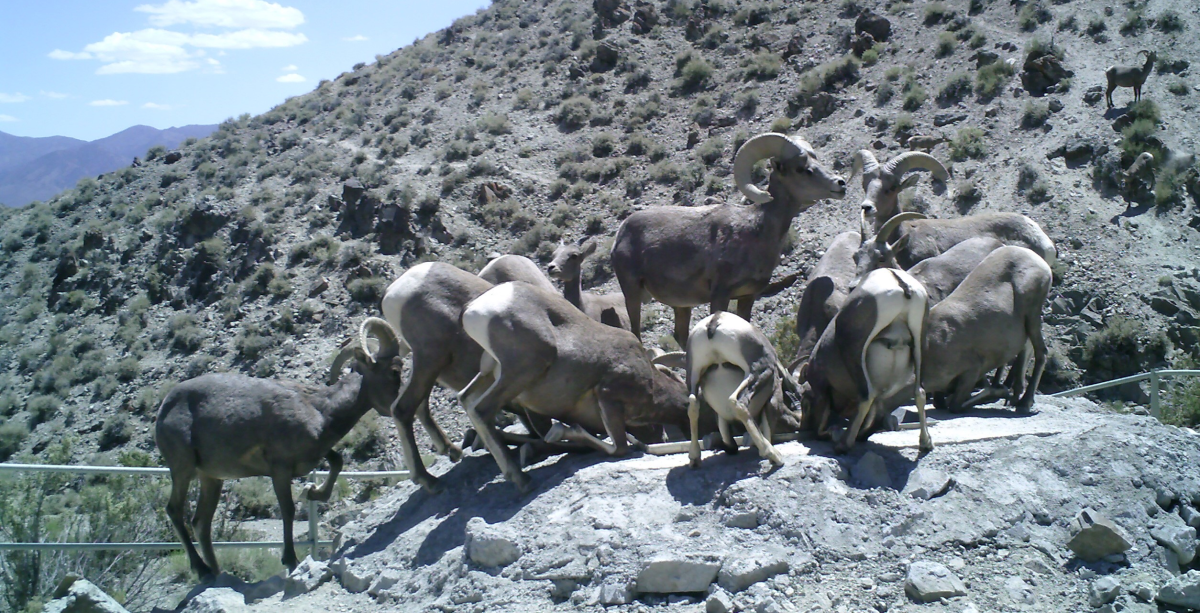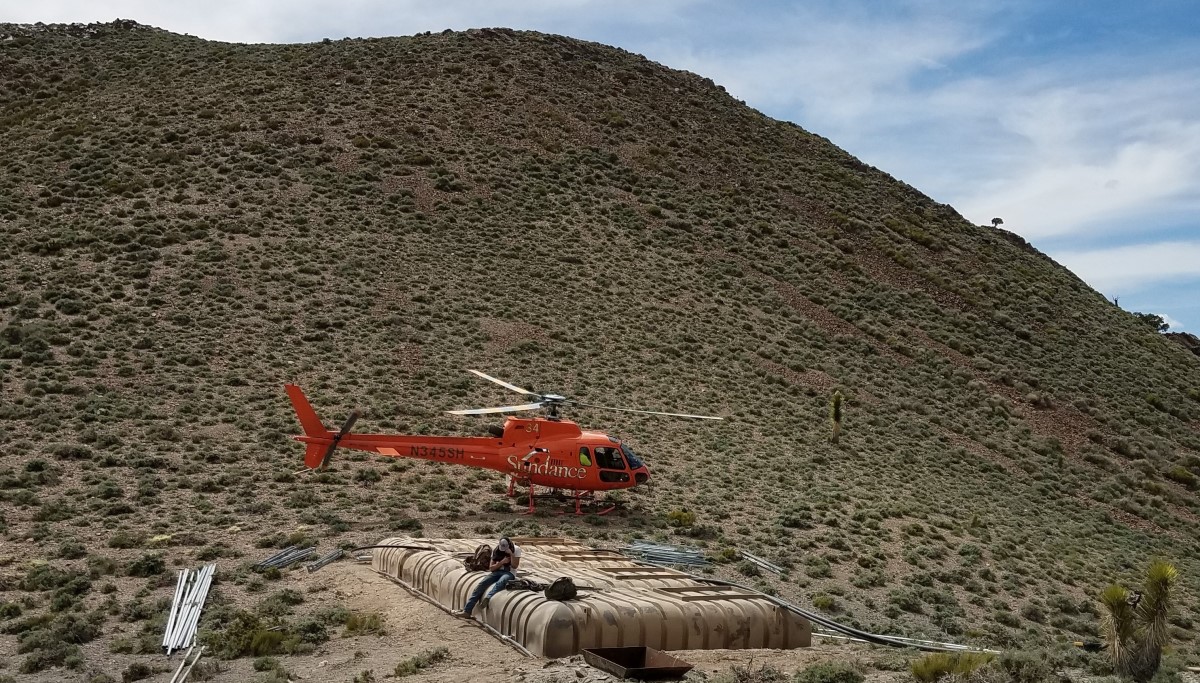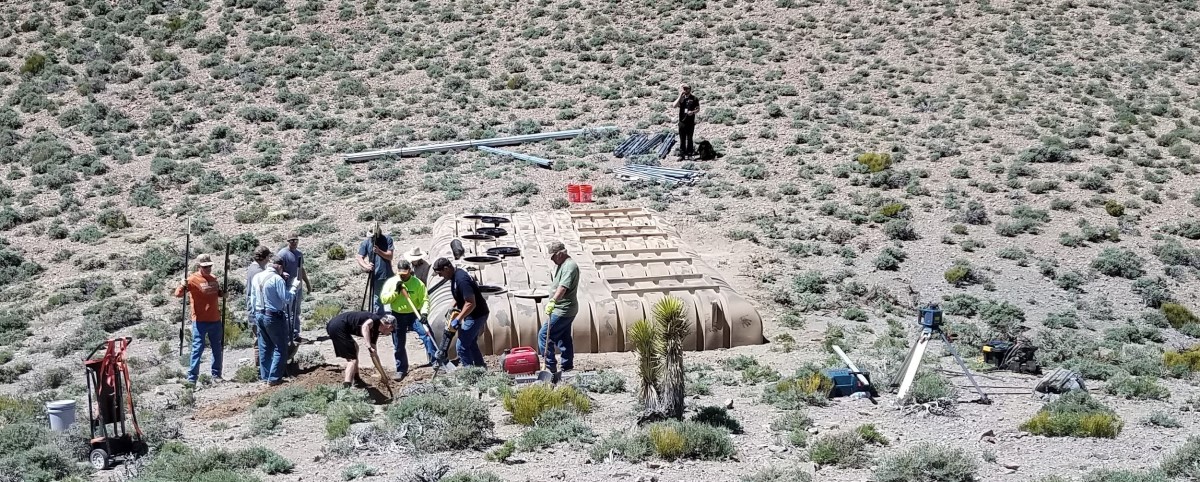The Infrastructure Investment and Jobs Act shows lawmakers on Capitol Hill are listening to hunters and anglers
Today, a bipartisan cohort of 21 lawmakers introduced to the U.S. Senate the Infrastructure Investment and Jobs Act, which includes important investments in conservation and natural infrastructure that will benefit hunters, anglers, and rural communities for years to come. The Theodore Roosevelt Conservation Partnership’s policy team has examined the bill text and identified several key policy and funding priorities that our community pushed for, including funding for wildlife crossings, national forest road repair and maintenance, drought resiliency, improved water quality, severe weather resilience, and habitat restoration.
“Now more than ever, we appreciate the diligent, bipartisan process undertaken by the Senate to develop a legislative package that both reauthorizes critical programs and takes additional steps to acknowledge the relationship between infrastructure and our natural environment,” said Whit Fosburgh, president and CEO of the TRCP. “From the availability of funds for wildlife crossings to restoration programs that will benefit large ecosystems like the Great Lakes and Chesapeake Bay, the legislation represents our nation’s continued commitment and responsibility to our lands, waters, and wildlife. We look forward to working with the Senate and House to advance the critical provisions within this bill.”
The TRCP advocated for several critical provisions in the legislation that will improve habitat connectivity for wildlife, invest in public lands and access, and restore and conserve aquatic habitats while restoring water quality.
Among the biggest wins is a first-of-its-kind $350-million grant program to fund the construction of roadway crossings that reduce wildlife-vehicle collisions and reconnect fragmented migration corridors.
The bipartisan bill included another top priority for TRCP and our partners with $250 million for the Legacy Roads and Trails Remediation Program, which will help address maintenance and repair needs on the Forest Service’s extensive network of roads and trails. This investment will not only improve public land access for hunters and anglers, but also safeguard fish habitats from harmful runoff and pollutants that can result when roads fall into disrepair.
Lawmakers also delivered for sportsmen and sportswomen by including the reauthorization of the Sport Fish Restoration and Boating Trust Fund, providing states with funding for fisheries projects, boating access, and aquatic education from a portion of fishing license, gear, and boat fuel sales.
Hunters and anglers stand to benefit further from a substantial increase in funding bringing the Clean Water State Revolving Fund Program, which supports estuary restoration and stormwater management projects to improve aquatic habitat and water quality, up to a grand total of $14.65 billion. Complementing this program is the bill’s $400-million allocation for WaterSMART. With $100 million set aside for natural infrastructure solutions, this boost will help mitigate the impacts of drought, create new habitat, and improve water quality.
Another key investment in resiliency and natural infrastructure is the $1.4 billion allocated by the bill to the Promoting Resilient Operations for Transformative, Efficient, and Cost-Saving Transportation (PROTECT) Grant Program, intended to reduce the risks posed to vulnerable communities by significant weather events.
The TRCP is also encouraged to see $2.2 billion allocated for the Federal Land Transportation Program, of which the Forest Service will see the largest percentage increase in funding among all federal agencies. Our national forests will likewise benefit from bill’s inclusion of the Repairing Existing Public Land by Adding Necessary Trees (REPLANT) Act, which will renew tree cover and address the growing backlog of nearly two million acres in need of replanting.
Other wins for conservation include:
- $300 million for Drought Contingency Planning to improve Colorado River Basin management
- $492 million for the National Oceans and Coastal Security Fund to improve coastal resiliency
- $800 million for the National Culvert Removal, Replacement, and Restoration Grant Program, which will improve habitat connectivity and improve survival of anadromous fish
- $1.9 billion for the Aquatic Ecosystem Restoration Fund
- $300 million for the Emergency Watershed Protection Program
- $1.7 billion for EPA Geographic Programs, essential collaborative initiatives to restore unique landscapes across the nation
- $11.2 billion for the Abandoned Mine Land Reclamation Fund to restore habitat affected by resource extraction
- $4.67 billion for orphaned well site plugging, remediation, and reclamation
“The Infrastructure Investment and Jobs Act represents a significant opportunity to make critical investments in fish and wildlife habitat, sporting access, and the future of our hunting and fishing traditions,” said Fosburgh. “Sportsmen and sportswomen appreciate the leadership that produced this legislation and for the attention that lawmakers have shown to our community’s priorities. We hope this bill will enjoy quick passage in the full Senate and look forward to working with lawmakers in the House to ensure that it can be sent to the president’s desk without delay.”
Photo: Paulo O via Flickr








This all sounds amazing but how much can be done with these figures? For example, how many projects will the “350-million grant program to fund the construction of roadway crossings that reduce wildlife-vehicle collisions and reconnect fragmented migration corridors” approximately include? My buddy works for a contractor who builds bridges and I hear the cost of some of these projects which have astronomical prices. Don’t get me wrong, I’m very happy all these were included in the bill and the numbers sound great but it would be good to get some idea of the true impact (i.e. how many crossings can be built based on the average cost of a typical wildlife migration corridor project).
The items noted in this informational item are very good things for conservation causes. However, like many pieces of federal legislation, the flip side of the coin, the ‘infrastructure’ bill also contains a lot of very questionable spending for causes with NOTHING to do with what the bill’s title suggests. That part of federal politics stinks like a drunk skunk waddling out of a fermented cabbage patch while it is unable to hold it flatulence. With all the good things in the bill, there is a lot of not good at all things. It puts every legislator in situation where no matter how they vote, the record can be used to support them or vilify them at election time. No wonder the Congress has a credibility rating with voters so low that similar performance by us working people would get us fired!
No tax dollars should be spent on reclamation where by monies could be obtained from those who caused the original problem!!
Bout time some in Congress pass a bill that provides for the greater good of this country instead of always doing for the ultra rich and the well connected in Congress. Congress and politics in this country are so broken its dang near a small miracle to get anything done for the greater good!
I assisted the Oregon Action Team, which was a multidisciplinary team, form NGO’s (Oregon TRCP included), State, Federal and Pew Charitable folks, working to define best practices and using Geospatial data from GPS collars to identify the five most critical migration corridor/vehicle problem areas, in Oregon. Every state in the west can do this. Colorado, Alaska, Wyoming, and Washington state, seem to be leading the charge.
Very worth the monies spent. The automobile Insurance companies seem to be one missing link in the chain, however, as they stand to benefit greatly.